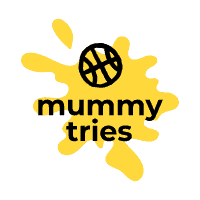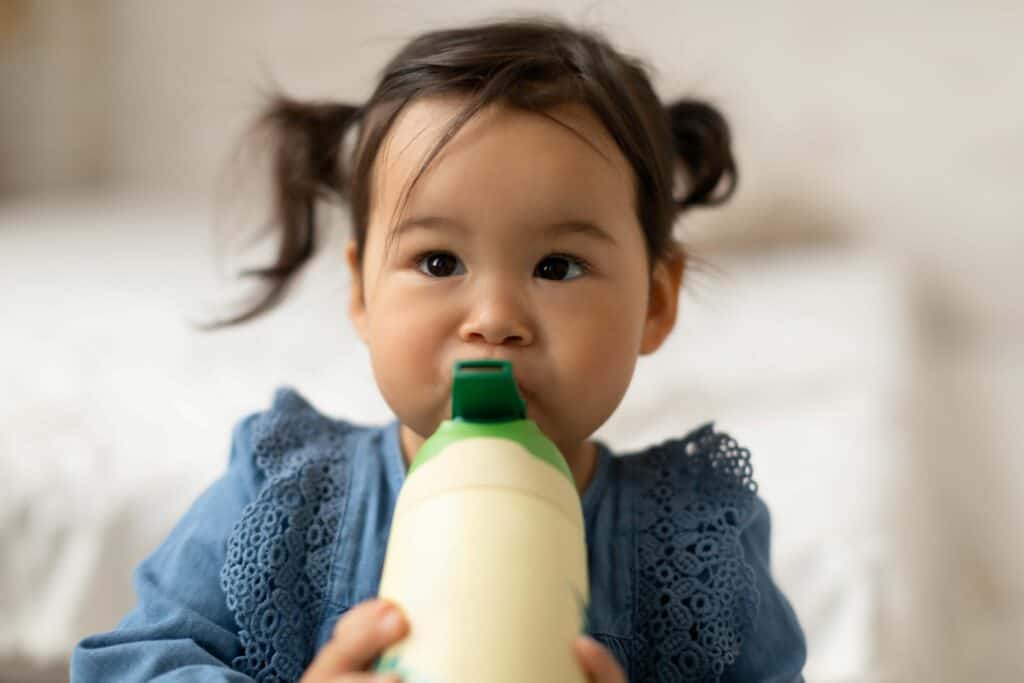Many parents worry when their 3-year-old child refuses to eat solid food and instead drinks only milk. While this behavior is not uncommon among toddlers, it can be a cause for concern for parents who want their child to have a balanced and healthy diet.
Understanding toddler eating behaviors is key to identifying whether a child’s milk-only diet is a temporary phase or a more significant issue. Toddlers are notoriously picky eaters and may go through periods of refusing to eat certain foods. However, if a child’s milk consumption is affecting their growth or causing other health concerns, it may be time to seek professional advice.
Key Takeaways:
- Understanding toddler eating behaviors is crucial for identifying potential health concerns.
- Strategies for encouraging healthy eating can help parents manage their child’s milk consumption and ensure a balanced diet.
- Support and resources are available for parents who are concerned about their child’s eating habits.
Understanding Toddler Eating Behaviors
Toddlers can be picky eaters, and it is not uncommon for them to refuse to eat anything other than milk for an extended period. Understanding toddler eating behaviors can help parents identify potential issues and provide appropriate solutions.
Growth and Development
Between the ages of 2 and 3, a toddler’s growth and development begin to slow down, and their appetite may decrease as a result. This is a normal part of the growth process, and parents should not be overly concerned if their toddler is eating less than before.
Common Causes of Picky Eating
There are several reasons why a toddler may exhibit picky eating habits. One common cause is a desire for independence. Toddlers are at a stage where they want to assert their independence, and this can extend to their food choices.
Another common cause of picky eating is a dislike of certain textures or flavors. Toddlers may be more sensitive to certain tastes and textures than adults, and this can make it difficult for them to eat certain foods.
The Role of Milk in a Toddler’s Diet
Milk is an important part of a toddler’s diet, but it should not be the only source of nutrition. Toddlers need a balanced diet that includes a variety of foods to ensure that they get all the nutrients they need.
While it is normal for toddlers to go through phases where they prefer certain foods over others, parents should encourage their child to try new foods and offer a variety of healthy options. It is also important to limit the amount of milk a toddler drinks to ensure that they are not filling up on milk and missing out on other important nutrients.
In summary, understanding toddler eating behaviors can help parents identify potential issues and provide appropriate solutions. By offering a variety of healthy options and limiting milk intake, parents can help ensure that their toddler gets the nutrients they need for healthy growth and development.
Identifying Potential Health Concerns
If a 3-year-old is not eating and only drinking milk, there are some potential health concerns that parents should be aware of. It is important to recognize these concerns and take action to address them.
Recognizing Nutritional Deficiencies
One of the main concerns with a 3-year-old who is only drinking milk is the potential for nutritional deficiencies. While milk is a good source of calcium and protein, it is not a complete source of nutrition. Children at this age need a variety of nutrients for healthy growth and development.
If a child is not getting enough nutrients, they may experience a range of symptoms, including fatigue, weakness, and irritability. They may also have trouble gaining weight or growing at a normal rate. Parents should keep an eye out for these symptoms and take action if they notice them in their child.
When to Consult a Pediatrician
If a child is not eating and only drinking milk, it is important to consult a pediatrician. The pediatrician can help parents identify potential health concerns and provide guidance on how to address them.
One potential concern is iron-deficiency anemia. Children who drink too much milk may not get enough iron in their diet, which can lead to anemia. Iron is important for healthy blood cell production, and a lack of iron can cause fatigue, weakness, and other symptoms.
Another concern is weight. Children who are not eating enough may have trouble gaining weight or may lose weight. This can be a sign of an underlying health condition, and parents should consult a pediatrician if they notice their child is not gaining weight at a normal rate.
In summary, if a 3-year-old is not eating and only drinking milk, parents should be aware of the potential health concerns. Recognizing nutritional deficiencies and consulting a pediatrician can help address these concerns and ensure the child is getting the nutrients they need for healthy growth and development.
Strategies for Encouraging Healthy Eating
Encouraging a 3-year-old to eat a balanced diet can be challenging, especially if they are only drinking milk. However, there are several strategies that parents can use to introduce new foods and textures, create a positive mealtime environment, and establish a division of responsibility in feeding.
Introducing New Foods and Textures
One way to encourage a 3-year-old to eat a balanced diet is to introduce new foods and textures gradually. Parents can start by offering small amounts of new foods alongside familiar foods that the child enjoys. It is also important to be patient and persistent, as it can take several attempts before a child is willing to try a new food.
Parents can also vary the texture of foods by offering crunchy, chewy, and soft foods. This can help to develop a child’s oral motor skills and make mealtime more interesting.
Creating a Positive Mealtime Environment
Creating a positive mealtime environment is crucial for encouraging healthy eating habits. Parents can make mealtime fun by involving the child in meal planning and preparation, using colorful plates and utensils, and playing soft music in the background.
It is also important to avoid distractions such as television and mobile devices, as these can take away from the focus on the meal. Instead, parents can encourage conversation and engage the child in the mealtime experience.
Division of Responsibility in Feeding
Establishing a division of responsibility in feeding can help to reduce mealtime stress and encourage healthy eating habits. Parents are responsible for providing a variety of healthy foods at regular meal and snack times, while children are responsible for deciding how much and whether to eat.
Parents should avoid pressuring children to eat or using food as a reward or punishment. Instead, they can encourage children to listen to their hunger and fullness cues and trust their own appetite.
By using these strategies, parents can help their 3-year-old to develop healthy eating habits and a positive relationship with food.
Managing Milk Consumption
When a 3-year-old child refuses to eat solid food and only drinks milk, it can be a cause for concern for parents. While milk provides essential nutrients like calcium and protein, relying solely on it for nutrition can lead to imbalances and deficiencies in a child’s diet. Therefore, it’s crucial to ensure they receive a wide range of nutrients for healthy growth and development.
The Impact of Too Much Milk
Consuming too much milk can lead to several issues, including constipation, iron deficiency, and even obesity. Milk is high in calories, and children who consume too much of it may not feel hungry enough to eat solid foods. This can lead to a lack of variety in their diet and a deficiency in essential nutrients.
Balancing Milk with Solid Foods
To ensure a balanced diet, parents should encourage their child to consume solid foods alongside milk. According to Parental Questions, “Offering a variety of foods, including fruits, vegetables, whole grains, lean protein, and dairy, can help ensure that your child is getting all the nutrients they need.”
Parents can also limit milk consumption to a reasonable amount. According to My Toddler Life, “Aim for 16-20 ounces of milk per day for toddlers. This amount provides the necessary nutrients without filling them up too much.”
In conclusion, while milk is an essential part of a child’s diet, relying solely on it for nutrition can lead to imbalances and deficiencies. Parents should encourage their child to consume a variety of solid foods alongside milk and limit milk consumption to a reasonable amount.
Support and Resources for Parents
As a parent, it can be frustrating and worrisome when your 3-year-old is not eating anything except milk. However, there are resources and strategies available to help you navigate this challenging situation.
Building Patience and Persistence
One of the most important things parents can do is to remain patient and persistent. It can take time for children to develop a taste for new foods, and it’s important to offer a variety of healthy options at each meal. Parents can also try to make mealtime fun and engaging by involving their child in the cooking process or making the meal look visually appealing.
Seeking Guidance from Experts
If a child’s picky eating habits persist and are causing concern, it may be helpful to seek guidance from a pediatrician or a registered dietitian. These experts can help identify any underlying issues, such as fear or anxiety around new foods, and provide tailored advice on how to address them.
In addition to seeking professional guidance, parents can also find support from other sources. Family meals can be a great opportunity to model healthy eating habits and encourage children to try new foods. There are also online communities and support groups where parents can connect with others who are going through similar situations.
Overall, it’s important for parents to remain persistent, patient, and open-minded when dealing with a 3-year-old who is only drinking milk. With the right resources and support, parents can help their child develop healthy eating habits and overcome any challenges that arise.
Frequently Asked Questions
What are common reasons for a 3-year-old to refuse food and only drink milk?
There are several reasons why a 3-year-old may refuse to eat solid foods and only drink milk. One common reason is picky eating, where a child may have a limited range of preferred foods and refuse to eat other foods due to their texture, color, or smell. Another common reason is a decrease in appetite due to slowed growth. Children between the ages of 2 and 3 experience slower growth, which can lead to a decrease in appetite.
How can I encourage my 3-year-old to eat solid foods instead of just drinking milk?
Encouraging a 3-year-old to eat solid foods can be challenging, but there are several strategies that may help. One strategy is to introduce new foods gradually, allowing the child to get used to the taste and texture. Another strategy is to involve the child in meal preparation, such as choosing ingredients or helping to cook. It’s also important to create a positive eating environment by avoiding distractions and making mealtime a pleasant experience.
What potential health issues should I be aware of if my 3-year-old isn’t eating and only drinks milk?
If a 3-year-old is not eating solid foods and only drinking milk, there are several potential health issues to be aware of. One issue is a lack of essential nutrients, such as iron and vitamin D, which are important for growth and development. Another issue is the risk of tooth decay, as milk contains natural sugars that can contribute to cavities. In some cases, prolonged milk consumption can also lead to anemia or obesity.
Are there strategies to transition a 3-year-old from milk to a balanced diet?
Transitioning a 3-year-old from milk to a balanced diet can be a gradual process. One strategy is to gradually reduce the amount of milk and increase the amount of solid foods. Another strategy is to offer a variety of healthy foods, such as fruits, vegetables, and whole grains, and encourage the child to try new foods. It’s also important to be patient and avoid pressuring the child to eat, as this can create negative associations with food.
What should I do if my 3-year-old hasn’t eaten solid food for an extended period?
If a 3-year-old hasn’t eaten solid food for an extended period, it’s important to consult a pediatrician to rule out any underlying health issues. The pediatrician may recommend a referral to a feeding specialist or dietitian who can help develop a plan to encourage the child to eat solid foods. In some cases, the child may need additional support, such as occupational therapy or behavioral therapy.
How much milk should a 3-year-old drink if they’re not eating regular meals?
If a 3-year-old is not eating regular meals, it’s important to monitor their milk intake. The American Academy of Pediatrics recommends that children between the ages of 2 and 3 consume no more than 24 ounces of milk per day. Consuming too much milk can lead to a decrease in appetite and a lack of essential nutrients. It’s important to offer a variety of healthy foods and encourage the child to eat solid foods to ensure they are getting adequate nutrition.

My name is Laura, and as a mother of two, I understand firsthand the joys and challenges of raising a child. That’s why I created this website, to provide a comprehensive and trustworthy source of information and support for new and expectant parents.




